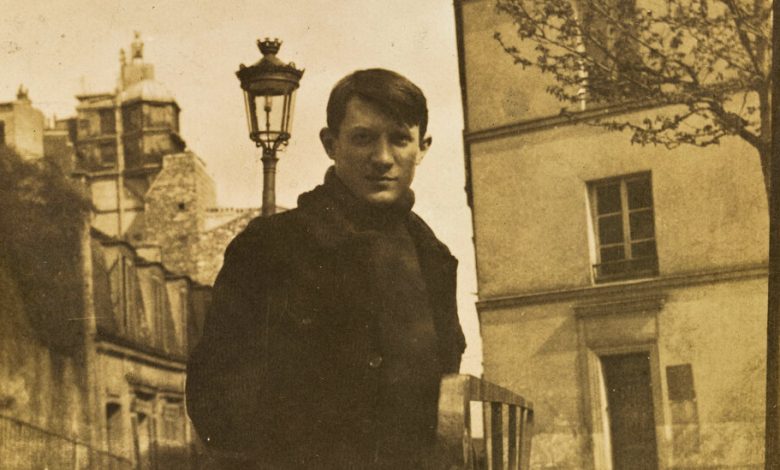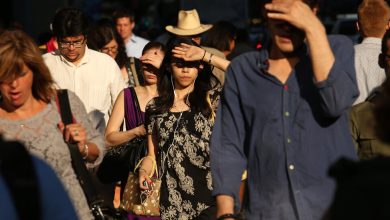Pablo Picasso, the Pariah of Paris

PICASSO THE FOREIGNER: An Artist in France, 1900-1973, by Annie Cohen-Solal. Translated by Sam Taylor.
This month’s half-century anniversary of Pablo Picasso’s death (on April 8, 1973) will bring tributes large and small. And a substantial one has already arrived in Annie Cohen-Solal’s “Picasso the Foreigner: An Artist in France, 1900-1973,” an outsize but propulsive read (600 pages in snack-size chapters) with a peppery twofold brief. It’s both a portrait of Picasso, that Zeus of 20th-century modernism, as a cultural outcast, a pariah, and an indictment of the culture — French — that made him one.
The book’s narrative is linear in a peripatetic, back-and-forth way. It begins with the Spanish artist — 19 years old, pumped with ambition — on his initial trip to Paris from Barcelona and moves onward through his seven-decade career. Most of this story has been, whole or in pieces, told, and told, and told. Many of its elements are beyond familiar: the people (dealers, other artists, spouses and lovers); the places (Spain, Paris, the South of France); the creative metabolism with its swings between paradigm-zapping and product-churning.
It’s the “outsider” filter Cohen-Solal applies that makes a difference here. As if to signal that she’s testing new ground, she introduces herself in the opening pages. We find her sitting in the cold, blank Paris building that holds the archives of the city Police Department, a carton of documents on a table in front of her.
She writes: “I have just encountered a suspect — a ‘foreigner’ who, on Oct. 25, 1900, arrived in Paris for the first time, only to find himself trailed by the police a few months later. His case file would grow with every passing year for the rest of his life.”
This suspect is Picasso. And he’s essentially under suspicion simply for being not-French. He was born in Málaga, and formally studied art in Barcelona and Madrid — but, really, the fact he’s a migrant from anywhere automatically tags him as a social and cultural menace, a political threat.
In Cohen-Solal’s account, French xenophobia, primal and entrenched, was a major shaper of Picasso’s biography, and it’s her tracing of it that makes her book distinctive. She cites examples — some more convincing than others — of its operations early and late, beginning with police harassment and continuing with the seedy living conditions Picasso experienced in his first Paris years when he was housed in a ramshackle Montmartre squat known as the Bateau-Lavoir. The place has been romanticized as a kind of picaresque vie de bohème commune that served as the birthplace of Cubism — Picasso himself expressed nostalgia for his time there — butto Cohen-Solal it suggests a “pitiful … flea-ridden and miserable” prototype of the slums in which France confines immigrants from its former African colonies today.
Picasso’s identity as foreigner was layered. As an alien national he was excluded from the spectrum of privileges and protections attached to French citizenship. And as an avant-garde artist — an aggressively purposeful one — he was shut out from the tradition-minded French cultural establishment for virtually the entirety of his career. Cohen-Solal’s chronicle of this rejection constitutes one of the book’s central dramas.
The revolution that was Cubism proved to be an unpardonable offense. Cohen-Solal’s report of its invention in partnership with Georges Braque — easily the high moment of both artists’ careers — is straightforward, canonical. What’s fascinating is her emphasis on the official art establishment’s rejection of it and, by extension, of anything Picasso did.
According to Cohen-Solal, for decades the country’s leading national museums simply refused to exhibit or collect him. When the Louvre was offered “Les Demoiselles d’Avignon” as a gift in 1929, it turned it down. By then generally recognized as a turning-point masterpiece, the painting went instead to the Museum of Modern Art in New York, as did a trove of invaluable Cubist works.
The tide only turned in France after World War II, when Picasso, by then a box-office draw, began donating works to French provincial museums outside the academic sphere. He knew what generosity was buying him. It was seeding public ground, growing an audience, spreading his brand. He knew the establishment would eventually cave to popular demand, grant him admission, which it grudgingly did, but so late in the game that it had little of his best past work to show.
So, the reviled foreigner, once disdained for his fractured French and suspected anarchist sympathies, got justice — call it revenge — on his own terms, by making outside the cool place to be.
Not that he accomplished this on his own. Like any master strategist, he assembled supportive backup. And much of Cohen-Solal’s book (translated from the French by Sam Taylor) is taken up with detail-filigreed cameo portraits of people who befriended, promoted and inspired Picasso: poets and writers like Max Jacob, Guillaume Apollinaire and Jean Cocteau; dealers like Daniel-Henry Kahnweiler and Paul Rosenberg; patrons like Leo and Gertrude Stein; and collaborators like Braque. Few of these relationships lasted; few ended well.
In most cases, one suspects, Picasso, spectacularly self-centered, was to blame. (One can only speculate about why he refused to sign a petition that might have saved Jacob, an early Paris friend, from a Nazi internment camp. And one can only wonder what Braque might have thought on hearing of Picasso saying, “Braque is the woman who loved me the most.”)
Cohen-Solal — who has written biographies of Sartre and Leo Castelli — floats some ethical reservations, but her take on Picasso is positive, even celebratory. Mentions of “genius” float through the book like party balloons. “Heroic” and “fearless” recur.
Even when he is clearly problematic, she cuts him some slack. Was he an opportunist? Sure. Almost certainly that’s why, during the German occupation of France, he buddied up, for protection, with the Nazi-connected Cocteau. And it’s probably why, after the war, he veered in the other direction and joined the French Communist Party. Cohen-Solal suggests that such apparently contradictory moves — which some historians see reflected in swings between radical and “classical” phases in his art — can be explained by the existential vulnerability that the status of “foreigner” had instilled in him.
She compares his sense of this with that expressed by the American sociologist and civil rights activist W.E.B. Du Bois, though I would question an equivalence. Du Bois spoke of outsiderness in the context of race, as an identity defined by the “color line.” He was Black; Picasso was white. Their situations — the risk factors they faced — aren’t really comparable, any more than the artist’s first, funky Montmartre digs and an immigrant slum in Paris today are.
At the same time, both men came to grips with realities and pressures of difference — their own — and, rather than try to dodge or downplay it, made it their strength, made it what they were. (When, in 1959, the French government offered Picasso citizenship, after dangling the prospect earlier, he didn’t even bother to respond to the invitation.)
Du Bois has never looked more usefully prescient than in the present, when Otherness, in its many varieties, is at once widely acknowledged and under vicious, reactive siege. And this is an apt moment to bring the in-every-way complicated figure of Picasso into the picture, as this accessible multitasking book — a critical biography that is, in fact, only glancingly critical of its artist-subject — does.
Indeed, what the book really is, or wants to be, is a form of art history as protest. Cohen-Solal’s recurring first-person appearances throughout make this clear. At one point, she bluntly, exasperatedly asks us, “Doesn’t the scandal of the greatest artist of his age, stigmatized and targeted because he was a foreigner, resonate now with the rebirth of our ordinary xenophobias?” In her thematically insistent book, she works hard to make the scandal known for what it was and is.
Holland Cotter is co-chief art critic for The Times.
PICASSO THE FOREIGNER: An Artist in France, 1900-1973 | By Annie Cohen-Solal | Translated by Sam Taylor | Illustrated | 588 pp. | Farrar, Straus & Giroux | $40




